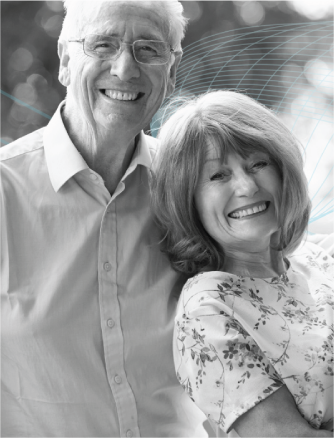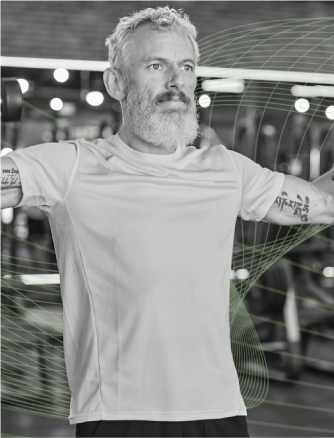In addition to decreasing the quality of life, chronic diseases drive annual healthcare costs into the billions of dollars. “Treatment of chronic disease constitutes an even larger proportion of spending—96 cents per dollar for Medicare and 83 cents per dollar for Medicaid,” according to the Director of the National Association of Chronic Disease.1 These incredible costs stem from a high readmissions rate of patients with chronic illnesses.
Almost 20 percent of Medicare patients were returning to hospitals within 30 days of discharge when the Affordable Care Act became law. As part of the legislation’s mandate, the Centers for Medicare and Medicaid Services (CMS) began lowering reimbursements to hospitals with high readmission rates. CMS estimated hospital readmissions were costing Medicare $26 billion annually, $17 billion of which could be avoidable with improvements in post-discharge care.2 Proactive hospitals implemented follow up strategies to ensure that patients understood and adhered to doctors’ orders after they left the hospital. These efforts have worked. CMS recently reported 49 of 50 states have decreased hospital readmissions from 2010 to 2015.
Quality care transitions
Across the board, patient follow-up has been a big part of any health systems success, particularly showing are the results of telephonic follow-up by nurses. However, this one-on-one case management is a time and resource intensive proposition. In addition to multiple interventions surrounding a specific patient demographic, such as cardiac patients, hospitals are faced with complicated and seemingly unending paper trails regarding transitional care.
Tom Ferry, in a Modern Healthcare article says that the downside of manual tasks and processes in care transition workflows is that they “can lead to miscommunication, delays and confusion, which can lead to poor patient outcomes and increased costs.”3 Clearly patient follow-up is essential for the improvement of healthcare and its patients; but, it is also an expensive, time intensive and potentially problematic issue that needs an alternative solution.
St. Jude medical study on remote patient monitoring
Following are excerpts from Vera Gruessner’s article, “Remote Medical Monitoring Cuts Hospital Readmission Rates”, published in mHealth Intelligence on Oct. 29, 2015, concerning results of a St. Jude Medical study of patients with cardiac devices that use remote medical monitoring4 :
- Patients with cardiac devices who use remote medical monitoring exhibited fewer hospitalizations and lower medical costs when compared with patients who do use this technology at home.
- The study spanned five years and supports the stance that remote patient monitoring improves patient care and can potentially cut hospital readmission rates.
- The study involved more than 90,000 patients who have had implantable cardiac devices and were followed by remote care. When compared to patients who were not monitored remotely, the results show a cost savings of more than $370,000 per 100 patients each year and a reduction of 10 hospitalizations and 119 days in the hospital.
- “This study is the first of its kind to find an economic benefit when remote monitoring is utilized in pacemaker, defibrillator, and cardiac resynchronization patients in the US,” Jonathan Piccini, M.D., associate professor of medicine at Duke University Medical Center, said in a public statement.
- Use of remote monitoring is associated with lower risks of hospitalization, shorter hospital stays, and lower rates of heart failure and stroke hospitalization.
- Fewer than half of cardiac device patients currently use remote monitoring; the findings suggest a significant opportunity for quality improvement. These important observations should have significant implications for patient management, as well as costs to the health care system.
Remote patient monitoring improves follow-up
Advances in medical device technology have brought us to the point where we can equip patients with remote monitoring devices upon hospital discharge that will connect them to their physician. These devices capture and transmit medical-grade vitals data that can automatically populate an EHR and alert clinicians to arrhythmias and other anomalies, and they can even track and promote patient adherence to both prescribed medications and lifestyle changes. In addition, the patient has a useful tool that provides instant feedback from a care provider with instructions on what to do next.
Automated follow-up saves money and improves outcomes during transitional care. When coupled with the right software, remote patient monitoring devices automatically detect patient data, determine the data’s clinical relevance, and then provide feedback and follow-up to patients as they move forward with recovery. Instead of receiving just one or two phone calls from a case management nurse, the patient is connected 24/7. Big data and IoT blend to create a unified resource that simplifies and customizes data for the physician, and acts as a digital caregiver for patients so they continue to have support and observation while they are at home.
Hospitals that have used remote patient monitoring have dramatically decreased readmissions, as reported in mHealth Intelligence. Vera Gruessner states in her article that integrating remote medical monitoring technology ensures a better transition from hospital to home: “These results are based on a study spanning five years, which is the largest study so far to determine the benefits of remote medical monitoring technology. This study further supports the role that remote monitoring improves patient care and can potentially cut hospital readmission rates.”4
According to the Centers for Disease Control, 7 of the top 10 causes of death in 2010 were chronic diseases. And heart disease and cancer, together, accounted for nearly 48 percent of all deaths.5 Add to this the frightening statistics that patients with a chronic disease have 80 to 100 percent chance of acquiring another one; and that 75 percent of Americans over the age of 65 have multiple chronic conditions—which account for 93 percent of total Medicare spending—and the widespread epidemic of chronic illnesses and the need to care for them becomes apparent.6 Remote patient monitoring, for chronic illnesses, such as heart disease and diabetes, helps hospitals and physicians keep real-time tabs on patients’ health and gives patients a way to help themselves, stay on top of their care post-discharge, and stay connected.
Dealing with patient circumstances after discharge can be challenging for hospitals and physicians. After all, the patient has gone home, could be feeling vulnerable and isolated, and the doctor has little say in how engaged patients stay in their own care. When a chronic disease continues to progress, there can be domino effects of depression, inactivity and other health issues that complicate the situation. St. Jude Medical published a press release last year stating, “Patients with high adherence to remote monitoring had more than twice (2.4x) the probability of survival than that of patients without remote monitoring.”6 Remote patient monitoring could be the solution needed to help deal with widespread chronic disease and to span the gap between hospital and home.
1. http://www.chronicdisease.org/?page=WhyWeNeedPH2impHC [return]
2. https://kaiserhealthnews.files.wordpress.com/2014/10/brennan.pdf [return]
3. http://www.modernhealthcare.com/article/20160328/SPONSORED/160329911 [return]
4. http://mhealthintelligence.com/news/remote-medical-monitoring-cuts-hospital-readmission-rates [return]
5. http://www.cdc.gov/nchs/fastats/deaths.htm [return]
6. http://www.cdc.gov/chronicdisease/about/multiple-chronic.htm [return]






